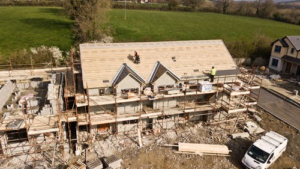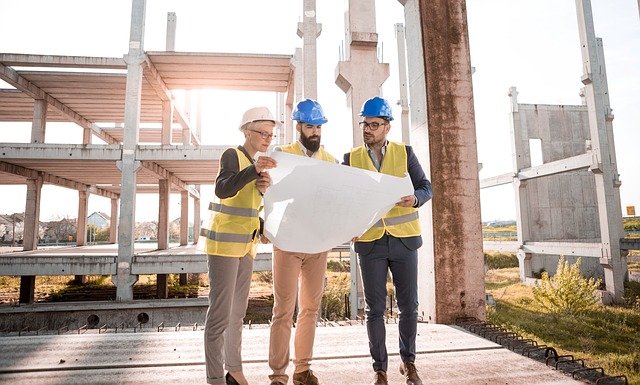Commercial architecture plays a crucial role in shaping the urban landscape and has a significant impact on the environment. As sustainability has become a critical issue, sustainable strategies are increasingly being applied to commercial architecture to minimize environmental impact and ensure long-term sustainability. If you want to learn more about these things, here are some of the most practical, sustainable, and effective strategies that can be applied to commercial architecture, so check them out today!
Efficient energy usage
Energy efficiency is a critical aspect of sustainable architecture, especially in commercial buildings that consume large amounts of energy. To minimize energy consumption, commercial buildings can incorporate energy-efficient lighting systems, such as LED lights, which consume less energy than traditional lighting. HVAC systems can also be designed to be energy-efficient, such as using smart thermostats to regulate temperature based on occupancy and outside weather. Renewable energy sources such as solar and wind power can also be incorporated into commercial buildings to reduce reliance on fossil fuels.
Water conservation
Water is a precious resource, and commercial buildings can significantly reduce their water consumption by incorporating water conservation strategies. For instance, rainwater harvesting systems can be installed to collect rainwater from rooftops and store it for later use. Greywater recycling systems can also be used to treat and reuse wastewater for non-potable purposes such as flushing toilets and irrigation. Additionally, low-flow plumbing fixtures such as toilets, faucets, and showerheads can reduce water consumption without sacrificing performance.
Use of sustainable materials
The choice of materials is crucial in sustainable architecture as construction and demolition activities generate significant amounts of waste. Commercial buildings can be constructed using sustainable materials such as recycled steel and concrete, reclaimed wood, or bamboo, which are renewable and locally sourced. These materials reduce the environmental impact of construction and promote sustainability. Of course, you should always stick to quality materials and reliable sources, especially when it comes to structural steel fabrication, so start looking for the right suppliers right now!
Natural ventilation
Even though it may not seem that way at first, the fact is that natural ventilation is an effective strategy to reduce the need for energy-intensive air conditioning systems. Commercial buildings can be designed to maximize natural ventilation by incorporating features such as operable windows, louvers, and skylights. These features allow for the free flow of air and help to regulate temperature and humidity levels inside the building.
Green roof
A green roof is an innovative and environmentally friendly strategy for commercial architecture. It involves planting vegetation on the roof of a building, which can reduce the urban heat island effect and improve air quality. Green roofs can also provide a habitat for wildlife and reduce stormwater runoff, which helps to protect water resources.
Maximizing daylighting
Daylighting is the practice of using natural light to illuminate commercial buildings, reducing the need for artificial lighting. Commercial buildings can be designed to maximize natural light by incorporating features such as large windows, light shelves, and skylights. Daylighting not only saves energy but also provides a more comfortable and healthier indoor environment for occupants.
Smart and efficient building technology
Smart building technology can help to optimize energy use in commercial buildings. For instance, automated lighting systems can be programmed to turn off lights when there is no one in the room, and HVAC systems can be regulated based on occupancy and weather conditions. Additionally, sensors can be used to detect occupancy and adjust lighting and temperature levels accordingly, leading to significant energy savings.
Net zero energy
Net zero energy buildings are designed to produce as much energy as they consume, resulting in zero net energy consumption. Commercial buildings can achieve net-zero energy by incorporating features such as renewable energy sources, efficient building design, and energy-efficient appliances. For instance, a building can use solar panels to generate electricity, while at the same time, using efficient insulation and windows to reduce energy loss.
Sustainable landscaping

Commercial landscaping can have a significant impact on the environment, but sustainable landscaping practices can help to reduce this impact. Sustainable landscaping involves the use of native plants and trees that require less water and maintenance. Additionally, rain gardens can be installed to capture stormwater runoff and promote infiltration into the soil, which helps to protect water resources.
Life cycle assessment
Life cycle assessment is a tool that can be used to evaluate the environmental impact of commercial buildings. It considers the environmental impact of a building throughout its entire life cycle, from construction and operation to demolition and disposal. By using life cycle assessment, architects and building owners can identify areas where environmental impacts can be reduced and make more informed decisions about sustainable design strategies. Additionally, life cycle assessment can help to promote transparency and accountability in the building industry, as it provides a framework for measuring and reporting the environmental impact of commercial buildings.
From efficient energy use and water conservation to the use of sustainable materials and smart building technology, there are many strategies that can be used to improve the sustainability of commercial buildings. By incorporating these strategies into commercial architecture, architects and building owners can create buildings that are not only environmentally friendly but also provide a healthier and more comfortable indoor environment for occupants. As we continue to face environmental challenges such as climate change and resource depletion, sustainable architecture will play an increasingly important role in shaping the future of our built environment.














